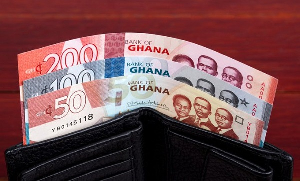Travel Matters - How to Read a Schengen Visa Sticker
E-visa, stamp and sticker visas are the three types of visas prospective travellers. E-visa is also known as Electronic visa. It is a type of visa issued online by the host countries. This type of visa involves the applicant applying online and been issued with the visa after she meets a set of requirements. What the applicant needs to do is to print the visa and attach it to her travel document.
For Ghanaians who travel along the West African region, an immigration officer of the host country after satisfying himself of the purpose of your trip would stamp your passport to show that you have been granted the permission to visit that country.
The United States of America, South Africa, Japan and the Schengen countries are some of the countries that issue stickers as visas. A sticker visa is an adhesive paper with security features that is usually placed in one’s passport by a consular officer. The visa has information on the type of visa, number of entries and other details of the applicant and his trip.
A Schengen visa and all other sticker visas have several pieces of important information which a prospective traveler must be conversant with. This article is to help a prospective traveler interpret his visa sticker.
A Schengen visa sticker is what would be used for this illustration, even though the stickers of other embassies look different, being able to interpret a Schengen visa would help the reader to understand similar stickers from other countries.
The Schengen visa sticker information is provided in three major languages: English, French and German. It is important for us to understand the acronyms of the various Schengen countries in order for us to know what the letters on a sticker stands for.
The letters A, B, CH, CZE, D, DK, E, EST, F, FIN, GR, H, I, IS, LI, L, LT, LVA, M, N, NL, P, PL, S, SK, SVN – are acronyms for the Schengen countries where the visa is valid, and they stand for: A – Austria B – Belgium CH – Switzerland CZE – Czech Republic D – Germany
*DK – Denmark *E – Spain *EST – Estonia *F – France *FIN – Finland *GR – Greece *H – Hungary *I – Italy *IS – Iceland * L – Luxembourg *LT – Lithuania *LVA – Latvia *M – Malta *N – Norway *NL – Netherlands *P – Portugal *PL – Poland *S – Sweden *SK – Slovakia *SVN – Slovenia

Picture credit: Google
The above is a specimen of a Schengen visa labelled with numbers. The various parts number is explained below.
1- Security Feature – A hologram which serves as a security feature to prevent the production of fake ones.
2- Types of visa. A – Transit C- Short stay
D – Long term visa
3- Valid from- It shows the date that your visa is valid in the host country.
4- Valid for – It shows the countries your visa is valid for. In the case of the specimen visa it is valid for all Schengen state (Schengen Staten)
5- Heading
6- Number of entries (Single, Double and Multiple)
7- Until means the last date to leave the Schengen area
8- Visa sticker number. Each visa has a unique sticker number
9- Duration of stay. It shows the number of days that one can spend in the Schengen zone. In this case 90 days.
Warning: If you stay longer than the amount of days listed in your visa, you might be fined and future Schengen visa applications are subject to further review and possible refusal. The processing time for future visa applications may also be extended to 30-60 days. Depending on the amount of days you stay too long, you could risk being banned for 2-5 years.
10- It shows the country that is issuing the visa. NLD stands for the Netherlands.
11- Picture of the applicant
12- Contains the name, visa numbers and other numbers which serves as a security feature for the issuing country
13- Issued in is the place that the visa was issued 14- Name of the applicant
15- Date that the visa was issued
16- Passport Number
NB: Netherlands and some other Schengen countries have changed their visa stickers, so a
prospective traveler may be issued with a sticker which is a bit different from the specimen
posted but the information on the sticker remains the same.
Mustapha Jimah.
mustaphajimah@gmail.com
The writer is a former consular officer at the Netherlands Embassy in Ghana and currently the CEO of Musjima Ventures. His interest is in travel matters and migration issues. For enquiries call or whatsapp me on 0262677946.
Opinions of Monday, 2 March 2020
Columnist: Mustapha Jimah















